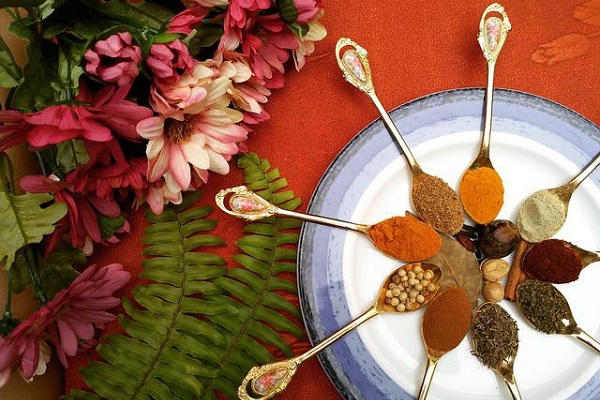Words: Drs Mayurkumar M PARATE & Vikas JAIN
Optimal health, according to Ayurveda, depends upon proper balance — of the state of body, mind, sense organs and soul. Ayurveda connects our physical and mental status with natural harmony; it also believes that if a person follows good spiritual and moral conduct, they can attain a disease-free health condition. Ayurveda further elaborates the concept of vyadhikshamatva [immunity], or the power of disease-resistance — one that helps to prevent pathological conditions, especially common infectious diseases. Ayurveda states, no less, that our dietary factors [aharaja], daily conduct [viharaja], climatic conditions and genetic factors, etc., affect our immunity.
Vyadhikshamatva [immunity] varies from person to person, since each and every individual possesses a specific inherent constitution [prakriti]. Hence, susceptibility towards disease differs from person to person. Vyadhikshamatva is made up of two words — vyadhi means disease and kshamatva relates to the power to suppress. This corresponds to the inherent ability of the body to provide protection against disease.
Vyadhi [disease] arises due to the imbalance between doshas [vata, pitta and kapha], dhatus [tissues] and malas [excretory products]. The physiological homeostasis of such factors is responsible for the maintenance of physical and mental health.
Any disturbed biological constitution causes pathological manifestations; this can be brought about by disease causative factors, viz., infectious organisms. The vyadhikshamatva combats against such factors and provides strength to prevent disease pathogenesis. This not only prevents disease invasion, but it also restricts the progress of disease and prevents recurrence of the disease. However, there are many factors that may be considered responsible for the diminished state of vyadhikshamatva. They are responsible for decreased immunity — ati-sthoola, ati-krisha, anivista-mamsa, anivista-asthi, anivista-shonita, durbala, asatmya-aaharopachita, alpa-aaharopachita and alpa-sattva, etc. These factors suppress immunity and, thus, decrease the body’s disease resistance power.
Factors Associated With Vyadhikshamatva
- Sleshma kapha
- Hita and ahita ahara
- Bala
- Agni
- Ojas.
Sleshma kapha possesses snigdha, sita, guru, manda, slaksna, mrtsna and sthira properties. Sleshma in normal state is associated with bala and ojas, while in abnormal conditions it is associated with mala. The optimum state of sleshma kapha provides stability, virility, resistance and courage, along with good immunity. The abnormal state of sleshma kapha, likewise, is responsible for lack of immunity.
Hita and ahita ahara can alter immune power. The wholesome and suitable foods considered as satmya, or hita, substances are water, ghee, milk, wheat and rice, etc. The ahita, or asatmya, substances, like excessively sour, hot, spicy and oily foods with lack of nutritional value cause ill-effects and decrease immunity. The hita ahara is responsible for the healthy production of dhatus which further form ojas and increases bala, while boosting vyadhikshmatva. The ahita substance is responsible for improper nourishment of dhatus due to which ojas and vyadhikshmatva also diminish.
Bala is also associated with vyadhikshamatva, Bala provides strength to the body tissues; it is also responsible for strength. The essence of dhatus, and the strength of rasa and shukra is associated with bala. It, thus, supports the whole body and provides vyadhikshamatva. Sahaja bala exists from the time of birth and provides inherent immunity; kalaja bala is temporal strength which is acquired with the variations of seasons and age. It gives specific immunity, while yuktikrutaja bala is acquired by a combination of diet and daily routine. It provides immunity based on nutritional diet and exercise. Bala remains in alpa state in childhood and old age, and as uttama in young age. It is, therefore, obvious that adults possess good immunity as compared to children and the elderly.
Agni, or fire, means the power to digest and assimilate food. It is also related with vyadhikshama, while jatharagni is responsible for life, strength, enthusiasm, complexion: ojas, tejas and prana. The optimum state of jatharagni provides the essence of foods to the tissues and nourishes the body and augments immunity. The impaired state of agni disturbs tridoshas and deteriorates immune response. Agni digests, assimilates and metabolises food and, in the process, improves nourishment and nutritional intake, while lending strength to the tissues and, in turn, enhancing our immunity.
Ojas is strongly related with vyadhikshamatva, Ojas appears during embryogenesis as the essence of saptadhatus [rasa, rakta, mansa, meda, asthi, majja and shukra]. Ojas is the seat of strength that can be termed as bala, while sara of dhatus pervades all over the body and controls strength as well as energy. Ojas is viscous, greasy, somatmaka and clear in nature. Ojas gives life and energy and improves immunity. Anger, worry, hunger, exertion and diseased condition leads to ojakshaya due to which immunity get suppressed.
Rasayana & Vyadhikshamatva
Rasayana are Ayurveda drugs. They are used as rejuvenation therapy and to improve immunity. Rasayana therapy improves ojas and bala. It also increases vyadhikshamatva. Rasayana therapy provides long life, memory, intelligence, youthfulness, strength and protection from diseases. It also increases immunity by improving nutritive function and immunomodulatory action. The antioxidant, neuroprotective, haemopoietic and anti-aging effects of rasayana therapy improves natural immune responses. The rasayana drugs used as immunity boosters are: guduchi, amalaki, yasthimadhu, shatavari, ashwagandha
Immunity boosting foods. They are vegetables and fruits rich in beta carotene, vitamins and ascorbic acid. They help improve immunity. Certain foods like tomato, bell pepper, mushroom, broccoli, spinach and other green vegetables also help build resistance against infections.
Conclusion
The Ayurvedic concept of vyadhikshamatva can be correlated with the modern concept of immunity. The normal state of kapha, bala and ojas provides good immunity. Ojas as the essence of dhatus provides good immunity, while bala as strength gives immune power against disease. Hita ahara and agni also contribute significantly towards the normal level of immune responses. The rasayana therapy nourishes dhatus; it provides internal strength and also enhances ojas, while boosting immunity. The immunomodulatory effects of rasayana therapy improve inherent immunity. The vyadhikshamatva can be improved by certain natural herbs like tulsi, ashwagandha, triphala, ginger, garlic, turmeric and black cumin, among others.

